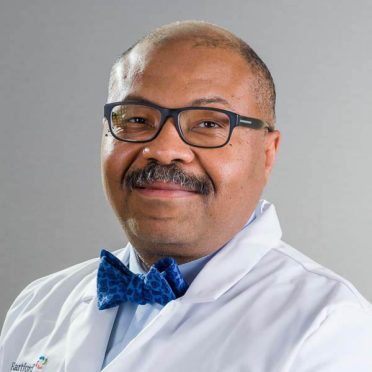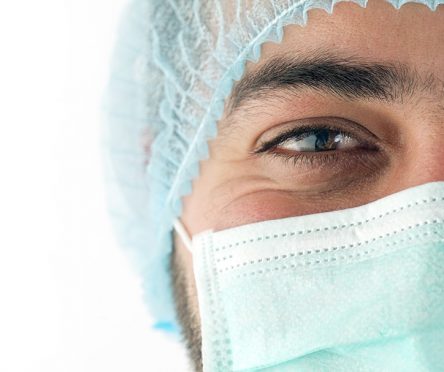Loreli Jenkins smiled through the computer’s camera at her neurosurgeon, holding her left hand horizontal to the floor.
“Tremors? They’re gone, baby, gone!” the 80-year-old Southington retiree said happily.
Jenkins connected virtually with Dr. Patrick Senatus, medical director of the Deep Brain Stimulation (DBS) Program at Hartford HealthCare’s Ayer Neuroscience Institute, days after the program completed its 100th DBS surgery at Hartford Hospital. She underwent two procedures, in October and November, to implant and activate a device to control the essential tremors she’d had for more than 30 years.
“I was diagnosed in the late 1980s and the tremors only got worse as I maxed out on the medications,” Jenkins said. “My left hand would shake and jerk. I couldn’t eat properly. I like a salad for lunch, but started eating them with my hands because I couldn’t stab the lettuce with a fork. Forget soup!”
The tremors affected her emotionally, too. She stopped going to restaurants with friends because she was embarrassed by the uncontrollable movements, and she felt tense all the time.
“It’s like your insides are jello. It’s not just your hand, it’s inside,” she said. “After the surgery, I felt relaxed for the first time in years. It was wonderful!”
Tremors are just one condition that can be addressed through DBS, Dr. Senatus said. The multidisciplinary Ayer team – which includes neurologists, neuropsychologists and social workers – tackle epilepsy, movement disorders like Parkinson’s disease and behavioral health conditions like obsessive-compulsive disorder, depression and Tourette syndrome.
“These are patients who are no longer responding optimally to nonsurgical treatment,” he said.
In DBS, the team uses precise imaging to find the place in the brain’s circuitry where nerve cells are misfiring. In the first surgery, the surgeon implants electrode leads in the targeted region of the brain to eventually control cell communication and, thus, unwanted movement or behavior. In the second surgery, an implantable pulse generator is placed to power the electrodes.
“The electric energy from the stimulator desynchronizes the abnormal neural circuitry, allowing the brain to reboot,” Dr. Senatus said.
The thought of brain surgery was terrifying for Jenkins, but after meeting the surgical team, she felt confident to move forward.
“I hoped it would at least get better, but it went away,” she said of the tremors. “I just turned 80 and my 80s are going to be fabulous!”
“It’s remarkable to see the difference. Every time is like the first time,” Dr. Senatus said of DBS procedures. “You’re alleviating a burden, and it’s humbling to be given the opportunity to do that.”



